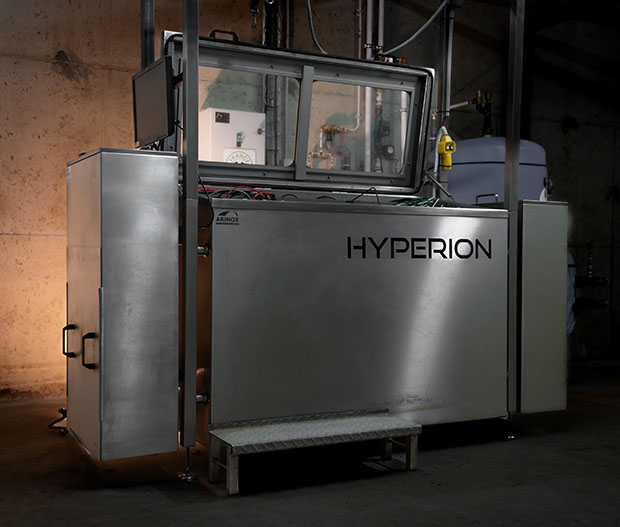As a CIO or company director, you know that your data centers are precious assets. They’re one of your most essential facilities, housing several servers which in turn store thousands of confidential data items important to the smooth running of the company, as well as network equipment. They are designed to guarantee uninterrupted operation and optimum data protection. However, nobody is immune to the risk of fire, and it can pose a major threat to your business. Fortunately, there are a number of precautions you can take to limit these risks.
Fire risks in data centers: what are they?
The 5 main risks associated with data center fires are listed below:
- Data loss: Fires can severely damage servers and data storage systems, resulting in significant data loss. This can have financial, legal and operational consequences for companies that depend on this data.
- Service interruptions: Data centers host online services, websites, applications and other critical functions. A fire can lead to a prolonged interruption of these services, causing disruption for users and customers, as well as financial losses for companies.
- Material damage: Fires can cause significant material damage to datacenter equipment, including servers, routers, switches and cables. This expensive equipment may require costly replacement, resulting in a prolonged recovery period.
- Security risks: Fires can compromise data center security by disabling security systems such as surveillance cameras, access control systems and intrusion detection systems. This can facilitate unauthorized access to sensitive facilities and data.
- Risks for personnel: Data center fires can endanger the safety and lives of personnel working on site. Toxic fumes, intense heat and the risk of structural collapse increase the danger for those trying to extinguish the fire or rescue equipment.
Fire precautions for data centers
To protect your datacenter from potential fires, here are some key steps you can take:
Choose an immersion-cooled datacenter
Data centers using immersion cooling offer certain fire safety advantages over traditional cooling methods such as air conditioning. This is because :
- In traditional data centers, air conditioning systems can overheat, increasing the risk of fire. By using immersion cooling, these systems are eliminated, reducing the risk of overheating and fire propagation associated with these systems.
- With immersion cooling, electronic components are immersed in a dielectric liquid. This liquid does not promote combustion. It also protects the equipment from ambient air and maintains it at optimum temperature. What’s more, it eliminates the risks associated with air and dust accumulation, thus reducing the risk of fire.
- In traditional data centers, electrical cables can cause a fire if short-circuited or overheated. With immersion cooling, cables are immersed in a dielectric liquid. This minimizes the risk of short-circuit and reduces the risk of fire. This technology keeps electronic components in the liquid, preventing dust accumulation. Dust can be combustible, increasing the risk of fire. By eliminating this factor, immersion cooling improves fire safety.
- Since components are immersed in a non-combustible liquid, the risk of fire spreading from one piece of equipment to another is considerably reduced. In the event of an incident, the dielectric liquid acts as a cooling agent and localized fire suppressant.
It is advisable to consult fire safety experts. Comply with the relevant standards and regulations to ensure fire safety in your data center. This applies irrespective of the cooling system used.
Smoke, heat and gas detectors, as well as early warning systems that can identify the warning signs of a fire, are of course indispensable. To go even further, use sprinkler or inert gas systems, capable of suppressing an incipient fire or containing it before it spreads. Maintain and test these systems regularly.
Check the electrical infrastructure
Of course, it’s important that your electrical infrastructure is designed and installed to the appropriate safety standards. Use fire-retardant cables and fire-resistant cable trays to reduce the risk of fire spreading along the wiring.
Separate risk areas
Physically separate high-risk areas, such as server rooms and power supply rooms, from other parts of the datacenter. Use fire barriers and containment systems to prevent the rapid spread of fires.
Anticipate and educate your staff
Train your staff in fire safety procedures, including the use of fire extinguishers and safety equipment. Organize evacuation drills so that everyone masters emergency procedures. To anticipate risks, draw up a detailed emergency plan that includes specific measures to be taken in the event of fire. This should include evacuation protocols, emergency contacts, data backup and system recovery procedures, and arrangements for communicating with stakeholders in the event of service interruption.
Don’t forget that fire safety is an ongoing process. It’s essential to conduct regular safety audits, update systems and equipment to the latest standards, and regularly train your staff in fire safety practices.










